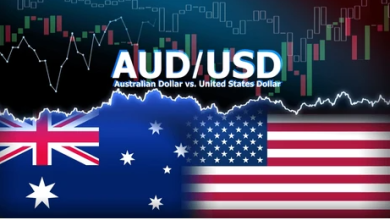Trade of The Day – AUD/NZD

Facts:
- AUD/NZD has risen above 1.092 for three consecutive days, halting its downward trend.
- RSI remains on the edge of being overbought (around 30).
- The market expects an interest rate cut in New Zealand in April, while rates in Australia are expected to remain unchanged (Bloomberg).
Recommendation:
- Trade: Long position (BUY) on AUDNZD at market price.
- Target Price (Take Profit; TP): 1.1022 (TP1), 1.11067 (TP2)
- Stop Loss (SL): 1.0891
Source: xStation5
Opinion:
Today, AUDNZD rebounded from a support level last tested in December 2024, despite data that increased market expectations for monetary easing in Australia. The Australian job market weakened significantly, with employment declining by nearly 53,000, while the market expected an increase of 30,800 jobs.
Meanwhile, NZD depreciation continued, despite New Zealand exiting a recession in Q4 2024 (GDP: +0.7% QoQ, forecast: +0.4%, previous: -1.1%), highlighting the dominant influence of interest rate differentials on currency fluctuations.
Additionally, AUD could benefit from China’s economic recovery, as China has announced not only ambitious tech sector development plans but also measures to boost domestic demand, including minimum wage reforms.
On the other hand, a risk factor is the U.S. tariffs on steel and aluminum imports, introduced in March. These commodities are crucial to Australia’s trade structure (iron ore: 22.8% of exports, coal: 19.8%; China is the world’s top aluminum producer – 2023 data, OEC). These tariffs could negatively impact economic activity, increasing pressure for faster interest rate cuts by the RBA.
Methodology:
This recommendation is based on technical analysis of the AUDNZD currency pair chart and fundamental analysis of monetary policy in both economies.
- The trade direction is determined by interest rate expectations favoring AUD over NZD and the pair’s rebound from a key support level after three failed breakdown attempts.
- Take Profit (TP) levels are set based on price action (TP1: December–January support, TP2: recent resistance).
- Stop Loss (SL) is set at a 1:1 ratio with TP1 and below recent price action support to protect the trade from premature closure before a potential rebound.





